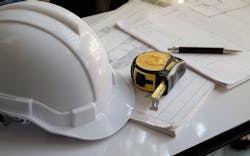Properly Hand Off A Project
Engineering projects usually migrate from the original designers to others. In my 40-year career, I’ve seen success and failure in projects I’ve handed off. The outcome usually depended upon whether the person taking on the project properly understood and adhered to the original design.
In all the successes, the original designer — me — was available for course correction if an issue arose. We then made changes that remained true to the original design.
In contrast, the failures invariably stemmed from straying too far from the original design — while not seeking or ignoring my advice. This is important. If a project engineer, in striving to save money, does something stupid, like putting the only shutoff valve for the plant boiler twenty feet in the air without access in the middle of the plant, somebody should be there to head off such a mistake. (I’ve provided some practical pointers in “Keep Plant Layout from Laying You Low,” and “Prevent Post-Project Pitfalls.")
[pullquote]
This underscores why early involvement in projects by production is so crucial. However, production engineers are experts in their product, not the process that makes it. Thus, it’s equally essential to involve the original designer to explain the importance of design choices. In one project, to save money, globe valves were replaced with cheap ball valves, which didn’t permit adequate control.
As for the boiler shutoff valve, I was the one who had to close and open this valve while crawling on two hot 4-in. pipes without a safety line. “Hey, I don’t get hazard pay,” the welder grinned.
Big capital projects consist of a bunch of small ones. Unfortunately, staff meetings are far removed from the smell of burnt welding rod and rarely delve adequately into details. Anyone familiar with refineries knows that the engineers who did the preliminary design usually aren’t the same ones who build and commission the process. That might explain why one project placed a new flare stack so close to an employee parking lot that paint started peeling off cars! Maybe a short phone call could have prevented this?
Another way to heighten attention to detail is a concept called early contractor involvement, which gets such firms involved at the design concept or schematic phase (see: “Involve Contractors Early").
There’s another issue with missing the subtleties of a design: no one budgets or plans — nor can they — for the additional burden to commissioning. We ask commissioning engineers to work 24/7. Now, we’re expecting them to fix problems created late in the design process. Something’s got to break. I remember a quote once that $1 spent in early design is worth $100 during commissioning; this probably is an underestimate.
A large part of the problem with keeping true to the original design is that engineers often are lousy communicators. I really wish colleges would require a tough technical communication class: reading, writing, presenting, listening, interpersonal skills and leadership. I’ve tortured several newly minted engineers, drilling into them the importance of writing and presenting. In the U.S. Air Force, all officers take a course using a book called “The Tongue and Quill” — you can’t very well lead if you don’t hone your communication skills. A few of my victims actually thanked me.
Pay attention to how you leave a project to posterity. Start with engineering reports on every facet of the design. Include: annotated site plans, equipment general arrangements, and elevations (in pdf or jpg format or both); marked-up photos (jpg) and photo sets for more details; “final design” construction piping and instrumentation diagrams (which should get updated to “as-built” versions), instrument specifications and even layout drawings. If you don’t know computer-aided design (CAD), learn it! You can store photos in text documents, spreadsheets and even on CAD drawings. Do everything you can to ease access to data. Review your work with operations and maintenance staff. If they don’t have time to review the text, prepare bullet points for a hallway ambush. File everything and, if the company allows, take a copy with you — so, if necessary, you can review a project with them over the phone. If you’ve signed a confidentiality agreement, remember it remains in force after you leave.
